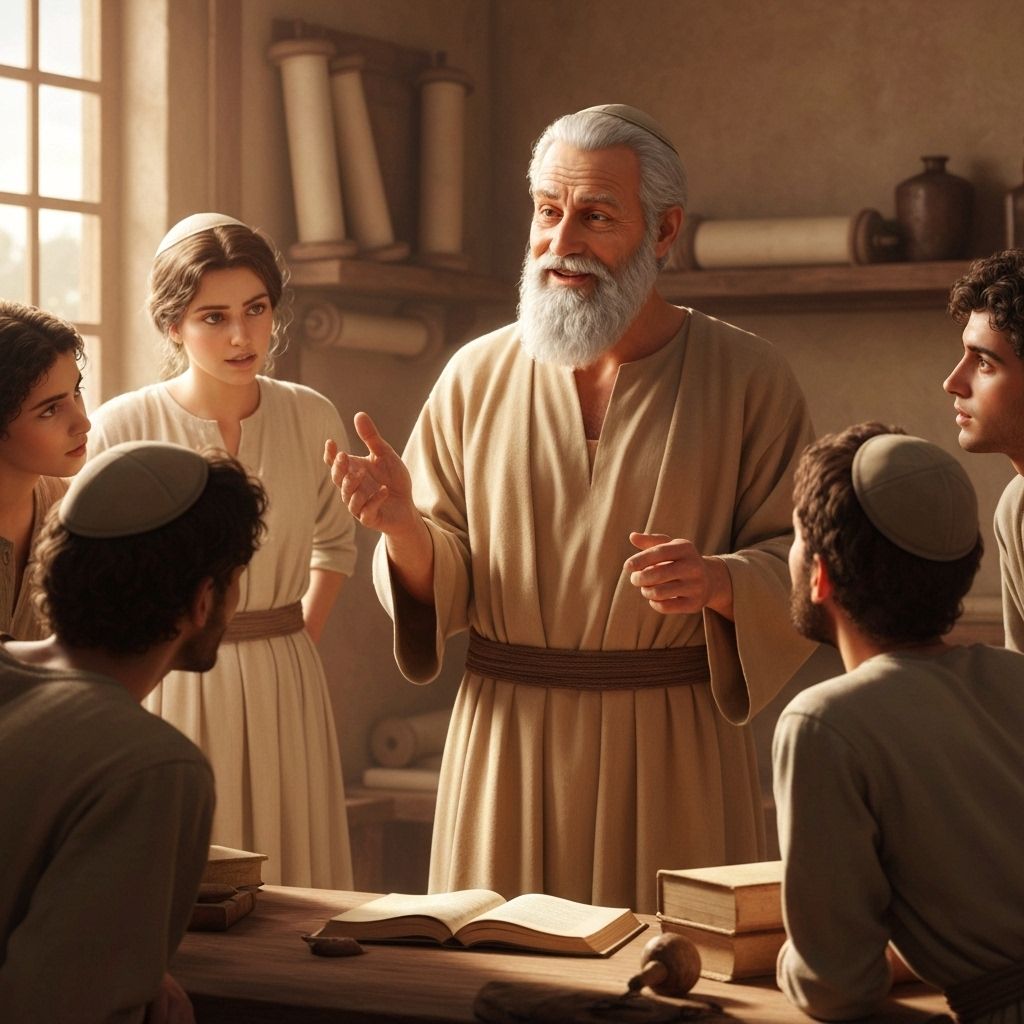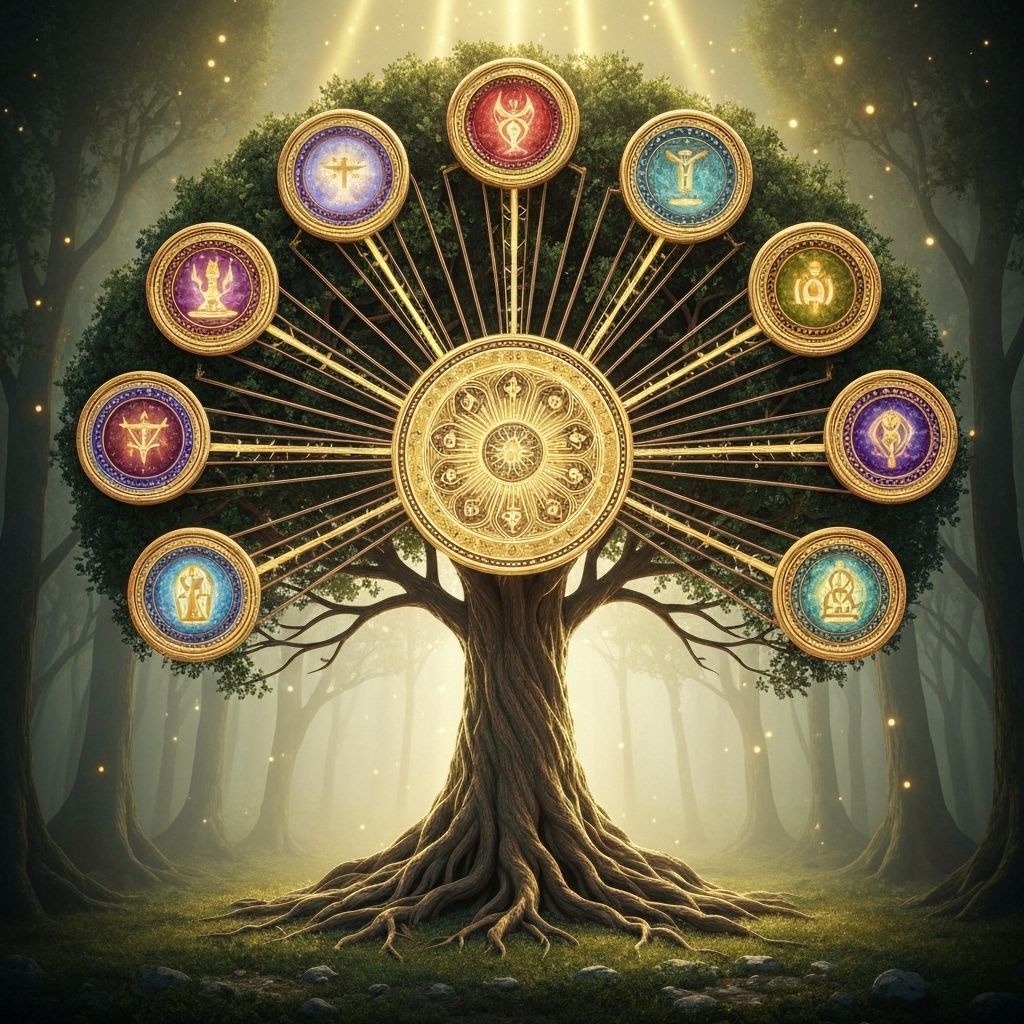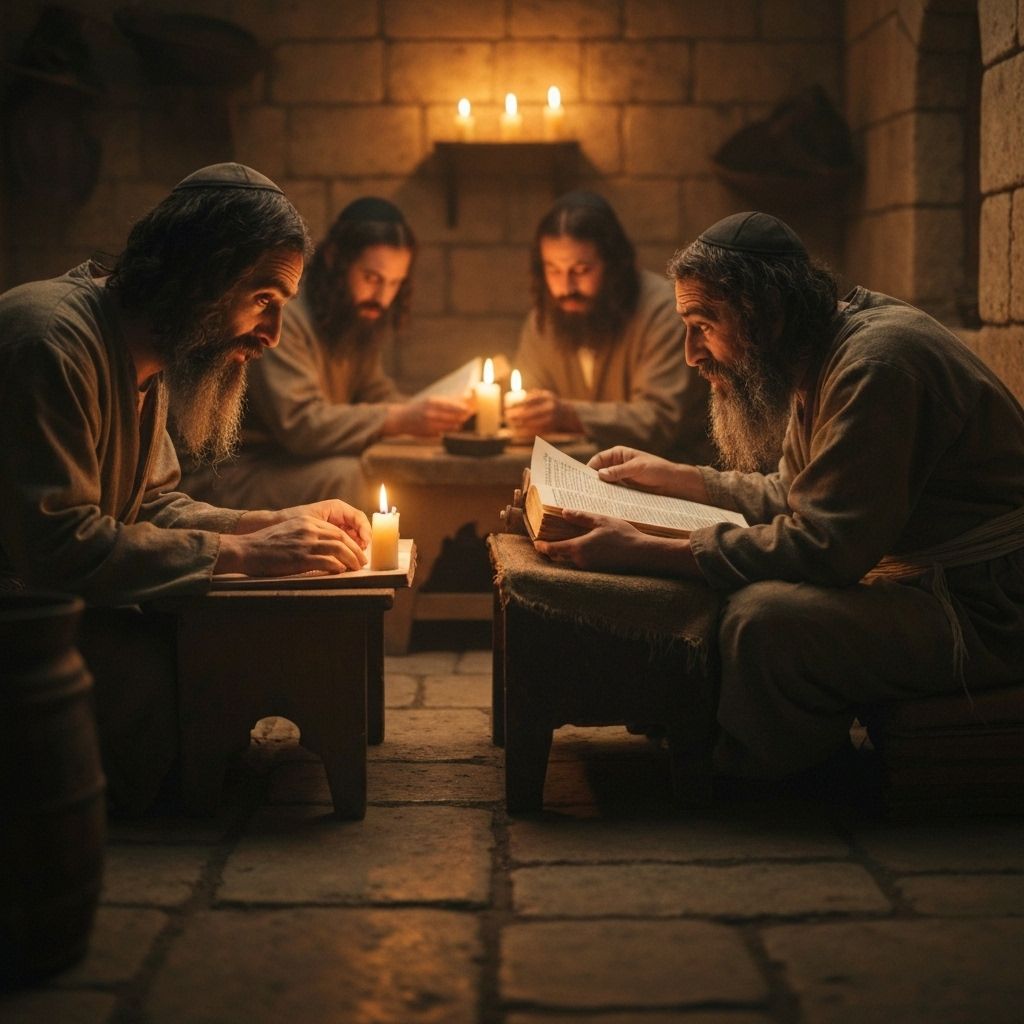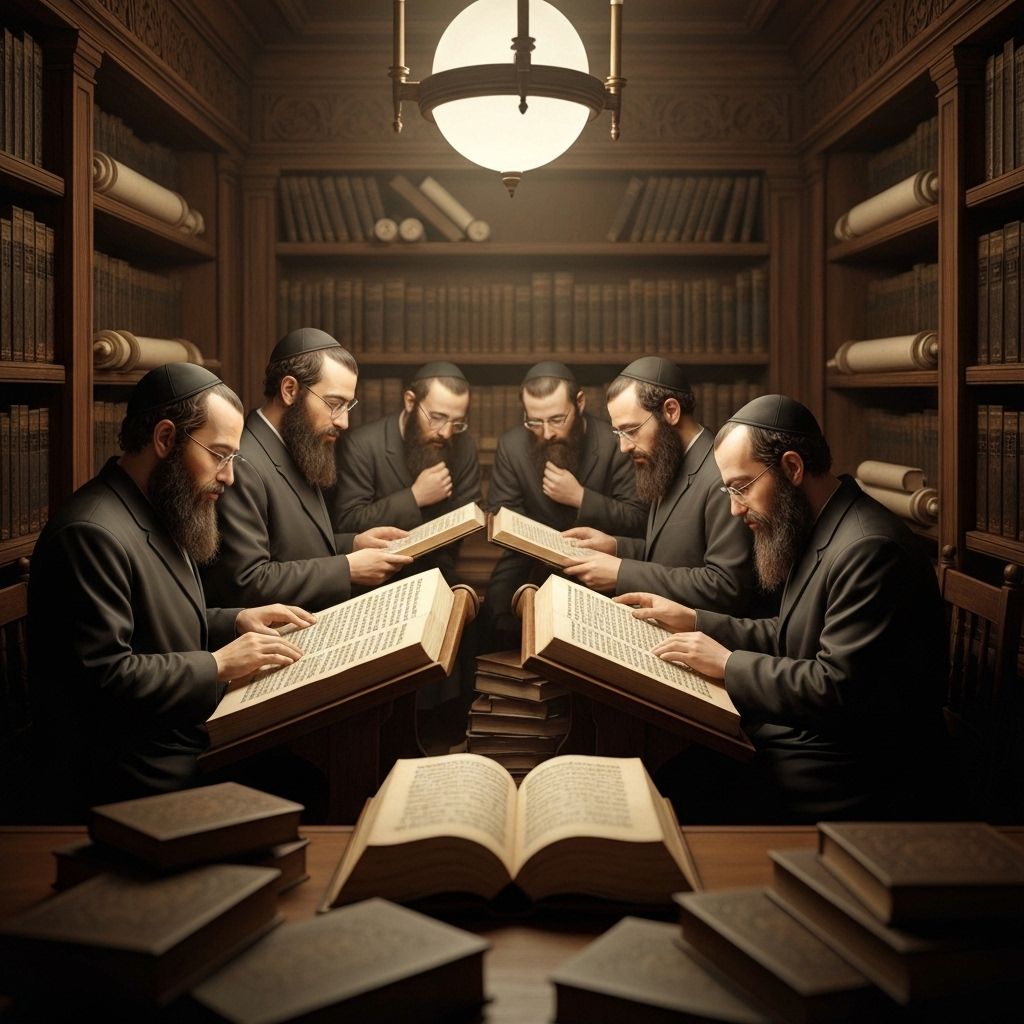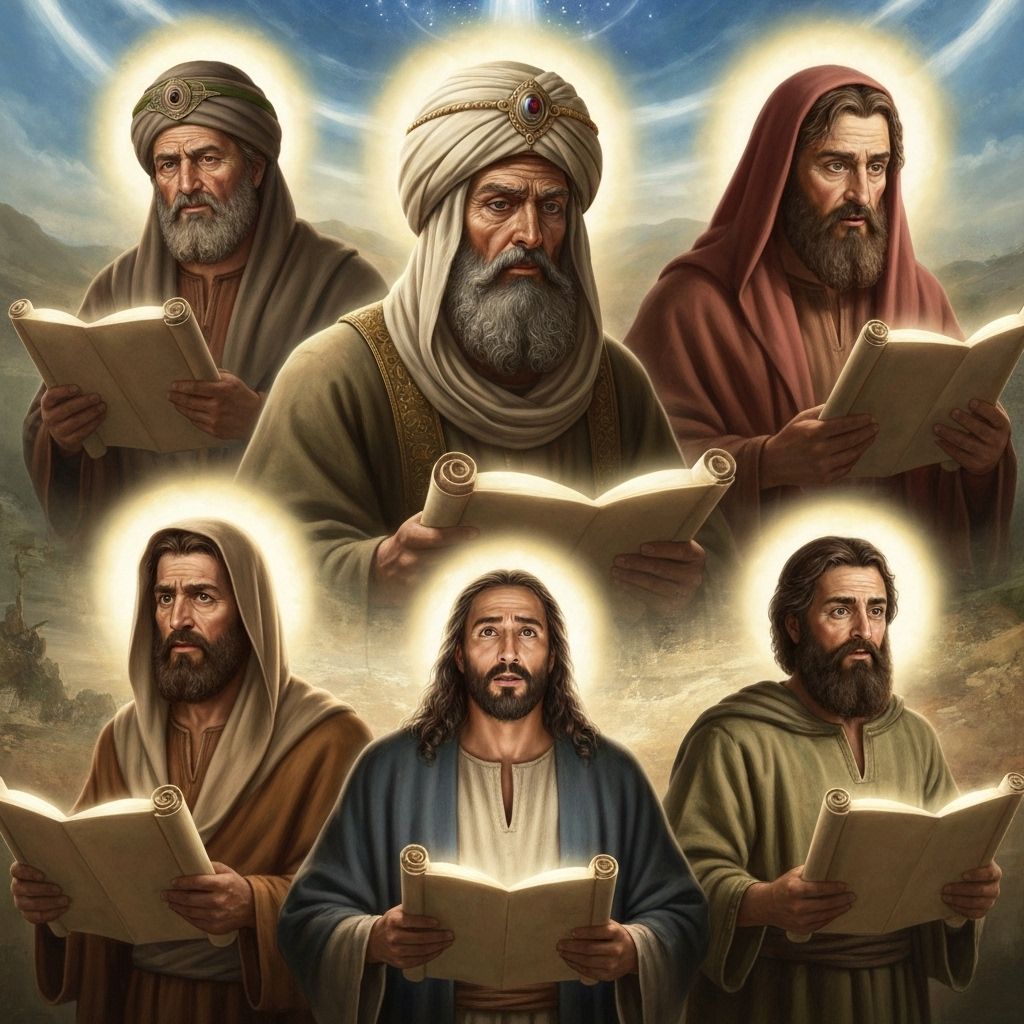3-Minute Summary
The Words of the Torah Explained with Help from Rashi and Ramban
Rashi (1040-1105) was a medieval French rabbi whose commentary on the Torah and Talmud is considered essential reading. His explanations focus on the plain meaning of the text and are known for their clarity and accessibility.
Ramban (1194-1270) was a Spanish rabbi, physician, and philosopher who provided deeper mystical and philosophical insights into the Torah, often building upon Rashi's work while adding his own profound interpretations.
The Torah opens with perhaps the most famous words ever written: 'In the beginning, Hashem created the heavens and the earth.' But this isn't just an ancient creation story—it's a profound meditation on existence, purpose, and what it means to be human. The Hebrew word 'Bereishit' literally means 'in the beginning of,' suggesting that creation isn't a finished product but an ongoing process we're all part of.
The six days of creation unfold like a cosmic symphony, each day building upon the last. Light separates from darkness, waters divide to create sky and sea, dry land emerges and sprouts vegetation, celestial bodies mark time and seasons, creatures fill the waters and skies, and finally land animals appear. Each stage reveals divine intentionality—nothing is random, everything has purpose.
Rashi, the great medieval commentator, asks why the Torah begins with creation rather than the first commandment given to the Jewish people. His answer is revolutionary: Hashem wanted to establish divine ownership of the entire world before giving the Land of Israel to the Jewish people. This teaches us that the physical world isn't separate from the spiritual—everything belongs to the Creator and has sacred potential.
The creation of humanity on the sixth day is described with unique intimacy. Unlike other creatures formed by divine speech ('Let there be...'), humans are crafted by divine hands from the dust of the earth and animated by Hashem's own breath. We are both earthly and divine, physical and spiritual, finite yet touched by infinity. This dual nature explains our constant inner tension between higher aspirations and earthly desires.
Adam and Eve's placement in Eden represents humanity's original state of harmony—with Hashem, with each other, with nature, and within themselves. The Garden isn't just a physical location but a spiritual state where divine will and human will are perfectly aligned. The Tree of Knowledge of Good and Evil stands at the center, representing the gift and burden of moral choice that defines human existence.
The serpent's temptation introduces the concept of evil not as a separate force, but as the distortion of good. The snake doesn't lie outright but twists truth, suggesting that eating the forbidden fruit will make them 'like Hashem, knowing good and evil.' This reflects how evil often presents itself as enlightenment or progress, making wrong choices seem reasonable or even noble.
When Adam and Eve eat from the tree, they don't gain godlike knowledge but lose their innocence and harmony. Suddenly aware of their nakedness, they experience shame, fear, and the need to hide from Hashem. This represents the birth of human self-consciousness—both our greatest gift and our heaviest burden. We become capable of moral reasoning but also of moral failure.
Hashem's response to their transgression reveals divine justice tempered by mercy. While consequences follow—pain in childbirth, difficulty in work, eventual death—Hashem also provides clothing for them and promises that humanity will ultimately triumph over evil. Even in judgment, divine love persists, showing that punishment serves correction, not destruction.
The story of Cain and Abel introduces the first murder, showing how quickly human relationships can be poisoned by jealousy and competition. Cain's offering is rejected not because of its content but because of his attitude—Hashem sees the heart behind the sacrifice. When jealousy turns to rage and rage to violence, we witness the first breakdown of the fundamental human bond between brothers.
Yet even after Cain murders Abel, Hashem's response shows remarkable restraint. Rather than executing justice immediately, Hashem engages Cain in dialogue, gives him opportunity to confess and repent, and even after punishment, places a protective mark upon him. This establishes the principle that even the worst sinners retain human dignity and the possibility of redemption.
The genealogies that follow trace humanity's expansion and development, showing how each generation builds upon the previous while facing new challenges. Some, like Enoch who 'walked with Hashem,' achieve spiritual heights, while others contribute to the world's increasing corruption. This pattern teaches us that history isn't predetermined—each generation and each individual has the power to choose their path.
Bereishit concludes with humanity multiplying and spreading across the earth, setting the stage for the dramatic events of Noah's generation. The parsha leaves us with fundamental questions that echo through all human experience: What does it mean to be created in Hashem's image? How do we balance freedom with responsibility? Can we return to Eden, or must we create something new? These questions don't have simple answers, but wrestling with them is part of what makes us human.


